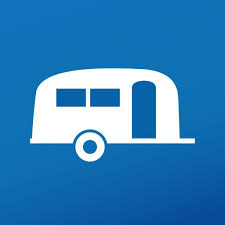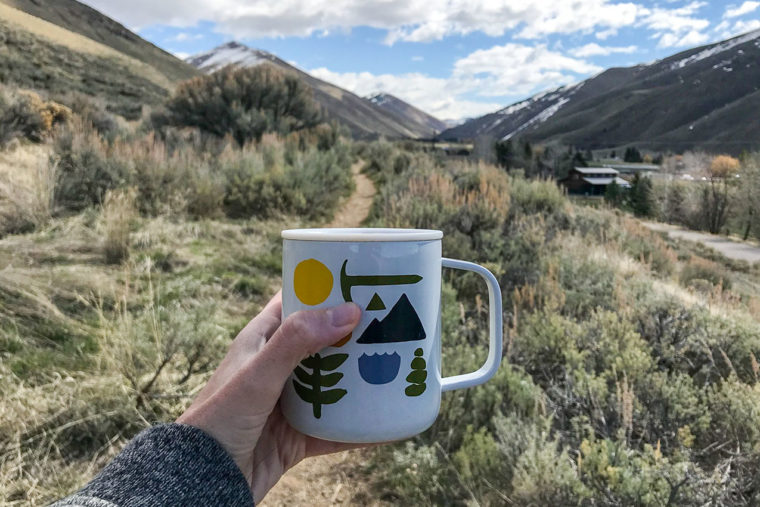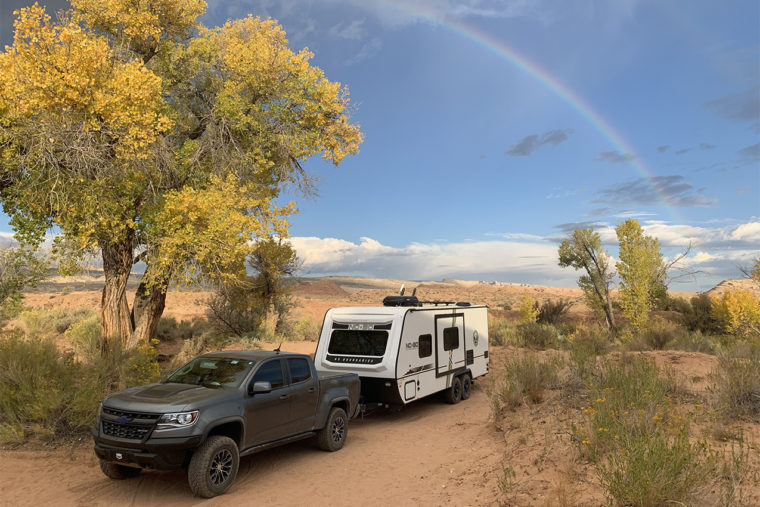After seeing deflated balloons disturbing a sea turtle nest and finding countless plastic bottles on hikes and beach walks, my husband and I committed to removing single-use plastics from our lives. We’ve gone room-by-room in both our home and travel trailer to remove everything that we can. The swaps aren’t always easy to come by, but in many cases, they cost less and are easier to maintain than plastic alternatives.
Tips for Green RV Living: How to Hit the Road With Sustainability in Mind
Here are a few easy and inexpensive things that you can do to remove single-use plastics from your RV.
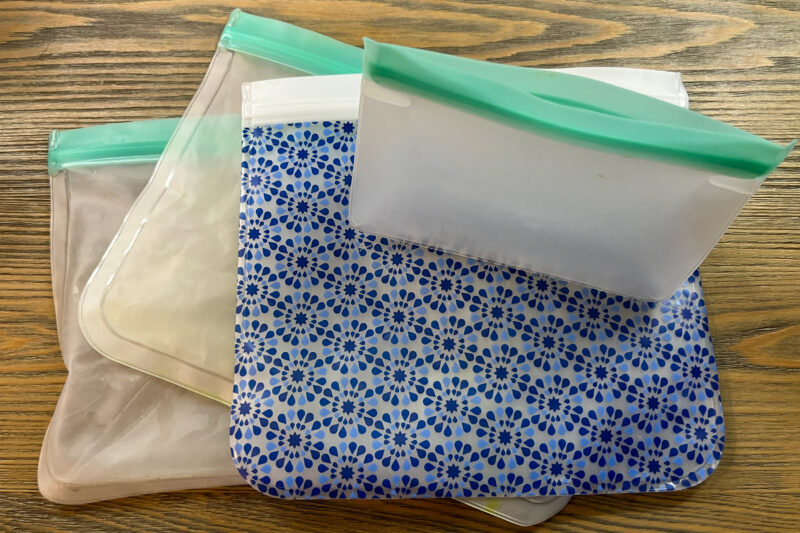
Sandwiches and Snacks
Whether you use plastic bags for sandwiches, snacks, or leftovers, you may wonder how you’ll get along without zip-top sandwich bags. We swapped plastic baggies for three sets of silicone sandwich bags, and so far, only one hasn’t held up to my (rather rough) use. When they need a wash, fill them with soapy water, close, shake, and rinse. Let them dry over a bottle or cup, and they’re ready to go again. You can also wrap sandwiches in a cloth napkin or beeswax wrap, which come in vegan and organic options.
Leftovers
For leftover soups or chili use silicon containers with a clamping lid. Wax paper and butcher tape work well for firmer items, like meatloaf. Use aluminum foil for cooking and reheating; you can wrap muffins and softer items that don’t get refrigerated in lint-free dish towels.
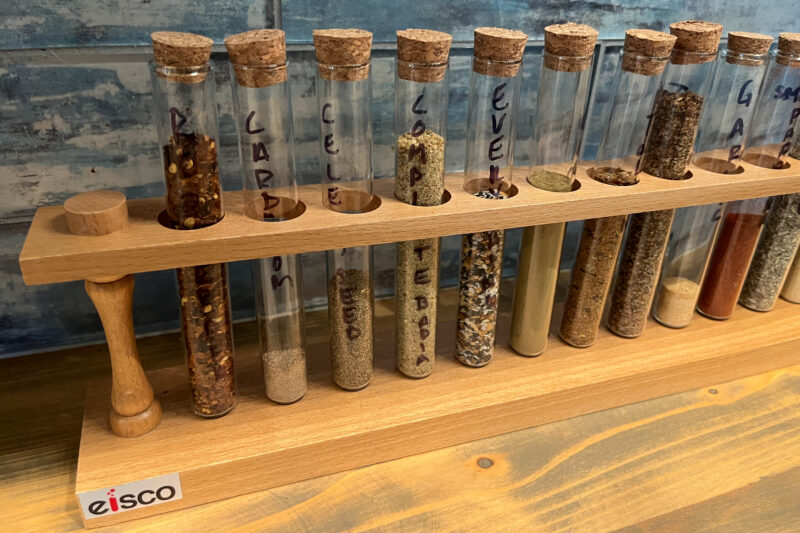
Spices
If your RV has room for a spice rack that holds full-size bottles, use glass. You can also buy magnetic spice containers that fit on your fridge. After trying a few different storage methods, I use test tubes—yes, like the ones from your high school chemistry class.
You can buy glass test tubes with cork stoppers, and use a wood or wire rack to hold them—make sure you match the rack size to the correct tube diameter.
Ice
Ice purchased from a camp store or gas station comes wrapped in plastic. And portable ice makers aren’t always an option in small trailers. Instead, we look for Twice the Ice machines (see the website for locations). Just fill up your cooler under the dispenser for bag-free ice. Oftentimes it costs less than bagged ice, too.
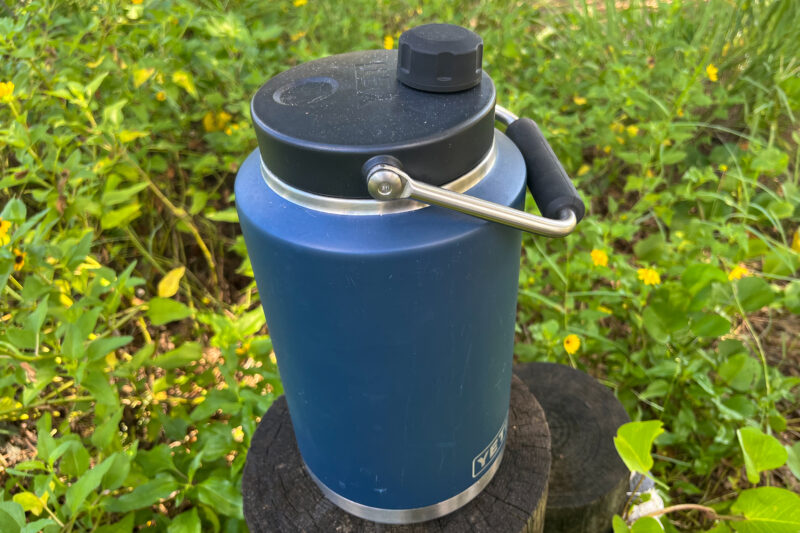
Water Bottles
Use an RV water filter for your rig’s water connection for filtered tap water. We also use BPA-free metal tumblers and a matching gallon jug that we keep in our tow vehicle. If you really want bottled water, buy a reusable 5-gallon jug and use a rechargeable pump dispenser.
6 Things We Wish Campers Knew About Sustainability
Dog Bags
Here’s one area where you can’t avoid plastic: dog poop bags. Despite my best efforts to remove single-use plastics, this one doesn’t have an alternative (yet). Save bread bags or other plastic bags that you’ve collected to get another use out of them.
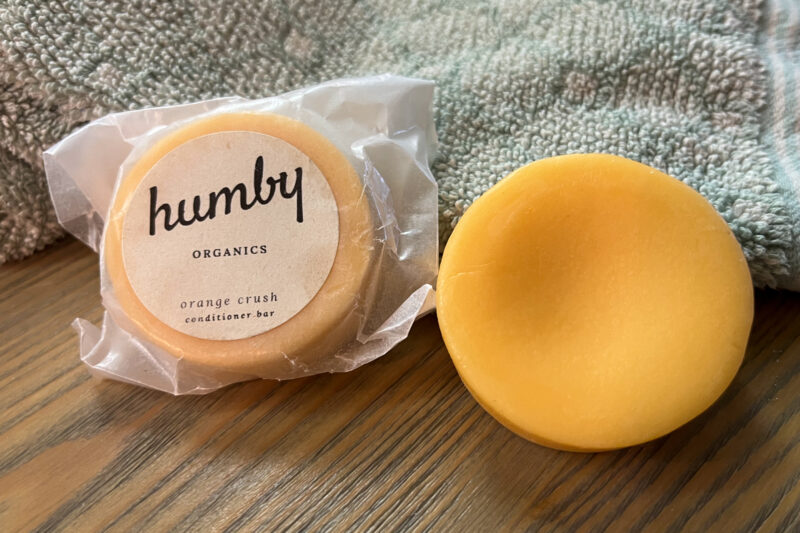
Toiletries
Nearly everything is plastic when it comes to personal grooming—or so it seems. Swap your shampoo, conditioner, and body wash bottles for bars. We keep our bars of soap in sisal bags, so they exfoliate and lather.
Instead of tubed toothpaste, buy toothpaste tablets that fit nicely in a recycled mint tin. They create less mess, which is always welcome, especially if you travel with kids.
Produce
Find local farmer’s markets near your camping destinations and bring produce bags (most markets won’t have pre-wrapped fruits and veggies). Many items will last longer in these types of bags, and by buying at a farmer’s market, you’ll get fresher produce and support local businesses.
Laundry
Skip the plastic tubs of liquid soap and gel-packed soap for laundry sheets instead. Load for load, they’re the cheapest option, take up less room in a camper, and they work as well as bottled detergent. Many campground washers don’t have a separate dispenser for fabric softener, so I use wool dryer balls instead—they’re long-lasting and effective.
Many of these single-use plastic swaps are also cost-effective, and you’ll find that you generate less garbage and make fewer runs to the trash bins.

